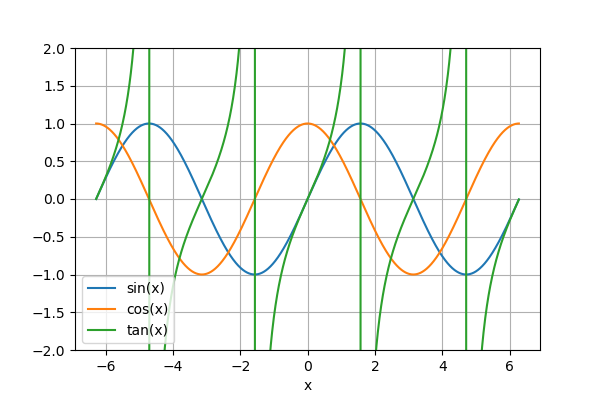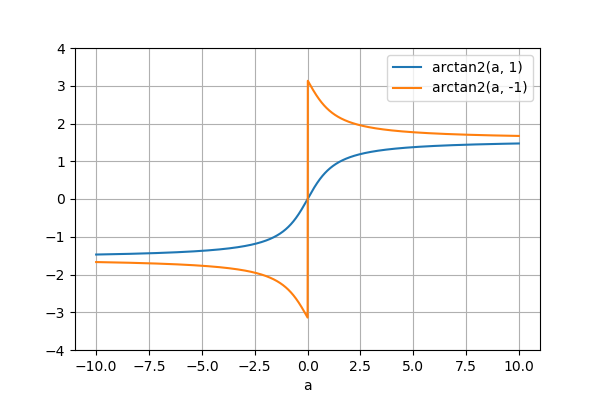※記事内に商品プロモーションを含むことがあります。
はじめに
NumPyで利用できる数学の関数について。
mathライブラリの数学の関数は、一般にスカラー値にしか適用できない。一方、NumPyの数学の関数は、スカラー値に加え、リストやnumpy.arrayオブジェクトにも適用できる。
環境
| ソフトウェア | バージョン |
|---|---|
| NumPy | 1.19 |
三角関数・逆三角関数
角度の単位はラジアン。
| 関数 | 記法 | 説明 |
|---|---|---|
| sin | np.sin(a) | |
| cos | np.cos(a) | |
| tan | np.tan(a) | |
| arcsin | np.arcsin(a) | |
| arccos | np.arccos(a) | |
| arctan | np.arctan(a) | 戻り値の範囲は[-pi/2, pi/2] |
| arctan2 | np.arctan2(a, b) | a/bのarctanを返す。戻り値の範囲は[-pi, pi] |
|
|
三角関数・逆三角関数のグラフは以下の通り。



以下のコードで描画した。
双曲線関数
| 関数 | 記法 |
|---|---|
| sinh | np.sinh(a) |
| cosh | np.cosh(a) |
| tanh | np.tanh(a) |
| arcsinh | np.arcsinh(a) |
| arccosh | np.arccosh(a) |
| arctanh | np.arctanh(a) |
端数処理
| 記法 | 説明 | |
|---|---|---|
| 四捨五入 | np.around(a, decimals=0) | 10^(-decimals)の1つ下の位を四捨五入 |
| 四捨五入 | np.round_(a, decimals=0) | aroundと同じ |
| 0方向への丸め | np.fix(a) | |
| 負方向への丸め(切捨て) | np.floor(a) | |
| 正方向への丸め(切上げ) | np.ceil(a) | |
| 0方向への丸め | np.trunc(a) |
|
|
和・積・差分
1つの配列に含まれる要素の和・積・差分。
|
|
指数関数・対数関数
|
|
その他
|
|
1つの配列の最大値・最小値を求める場合は、np.max, np.min関数を使う。
